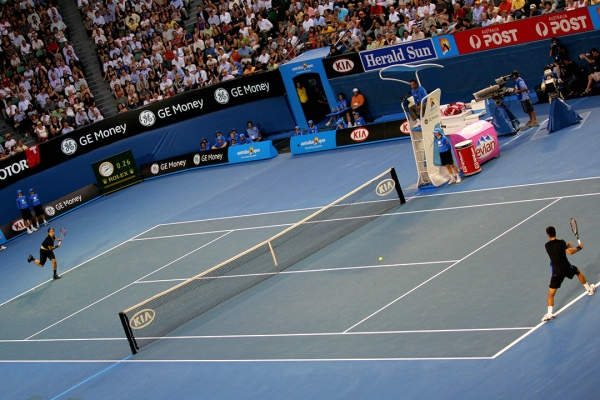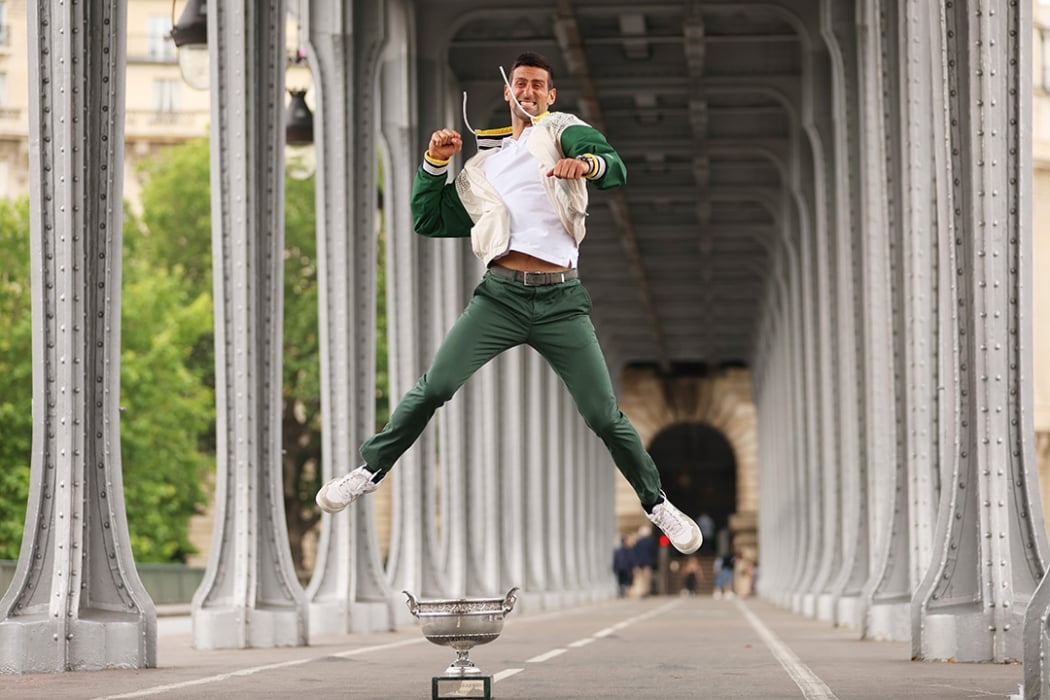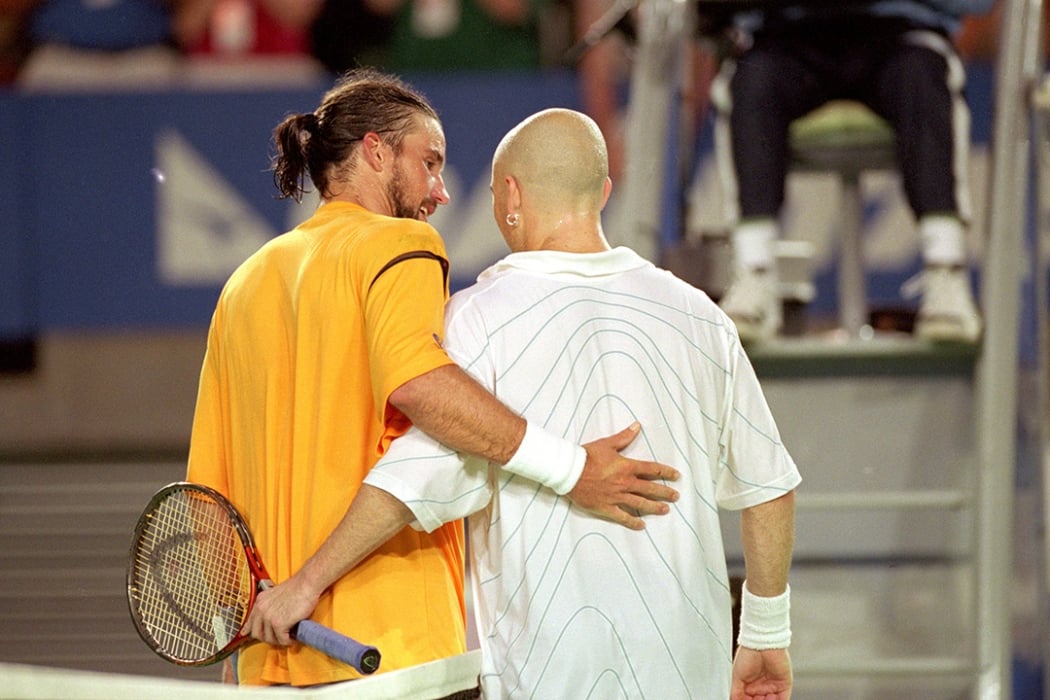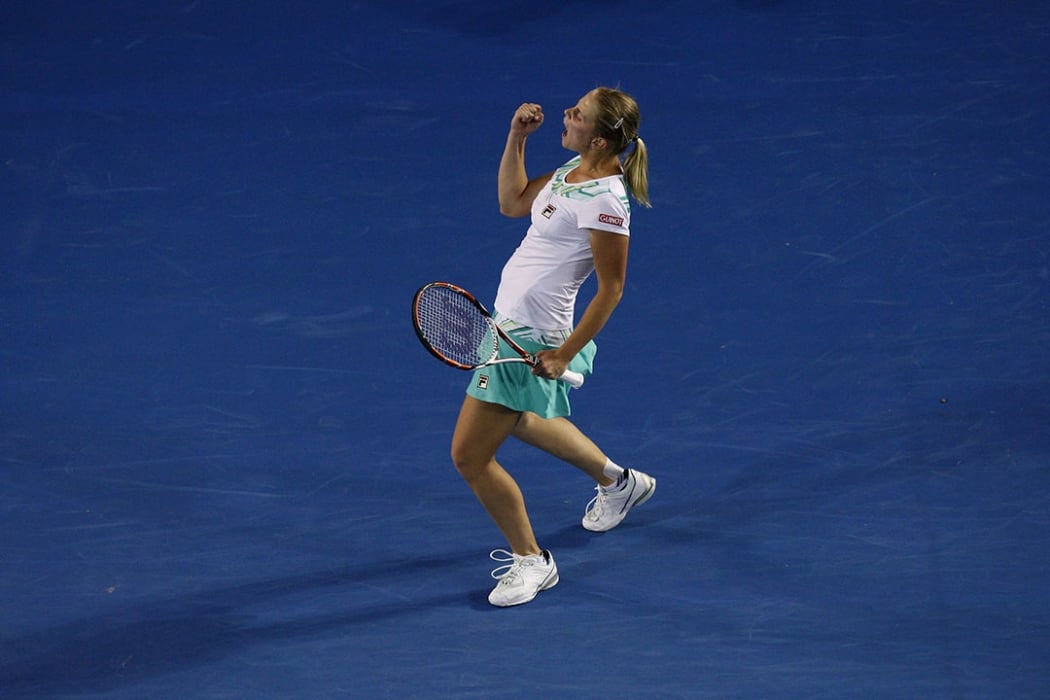Australian Open 2008 signalled a shift in the sport, in a variety of ways.
The tournament that year switched from green Rebound Ace to blue Plexicushion. Justine Henin, the overarching world No.1, saw her 32-match winning run ended by Maria Sharapova in the quarterfinals, foreshadowing her retirement just a few months later.
It also marked the end of Roger Federer’s era of dominance, when he was stunned in straight sets by Novak Djokovic in the semifinals.
This contest is the latest full AO match to be published on the Australian Open YouTube channel, with many more archive matches set for release each week.
Djokovic’s 7-5 6-3 7-6(5) win snapped Federer’s streak of reaching 10 consecutive major finals, and set up a clash with Jo-Wilfried Tsonga, whom Djokovic beat to win his first Grand Slam singles title.
It seems especially profound to reflect on this match now, considering Djokovic at the weekend won a record 23rd major singles title at Roland Garros.
Australian tennis writer Suzi Petkovski was at Rod Laver Arena for the Federer-Djokovic semifinal, covering Australian Open 2008 for Tennis Week and Inside Sport. And she found the contest fascinating.
"I know we're looking at it in hindsight,” she told ausopen.com, “but imagine if you told a fan (at the time): 'in this match you are seeing the greatest men's major winner in the history of the game'.
“Who would have picked that to be Djokovic?”
It is a fair point, because at the time, Federer dominated both Djokovic, and the entire men’s game.
He had won five of his six meetings with Djokovic, including both of their Grand Slam matches – the fourth round of AO 2007, and the 2007 US Open final – without losing a set.

He had been world No.1 for four years uninterrupted, and entered Australian Open 2008 as the two-time defending champion and the reigning champion at three of the four majors.
When he met the then 20-year-old Djokovic, he had already won 12 major singles titles, while Djokovic had none.
Yet there was a sense of anticipation about this clash, given Djokovic had risen to world No.3 and arrived at the semifinal stage of this tournament without dropping a set, fresh off victories over Lleyton Hewitt and David Ferrer.
"I think everyone wanted to see a real contest and not have players losing the match in the locker room. A lot of players were basically, in those years, coming out to eulogise Roger, rather than beat him. And people were getting a bit tired of it,” Petkovski recalled.
“People wanted to see someone take it up to Roger a bit more. We definitely saw a contest this night, but not the contest we were expecting.”

That was because it appeared business as usual when Federer took a 5-3 lead. But at that point, Djokovic wrested control.
He reeled off four straight games to pocket the first set, and dominated the second set. He again escaped danger in the third, saving two set points in the 12th game, then recovering from 3-1 down in the tiebreak.
“It was an interesting turning point in the history of the game,” Petkovski noted.
“At the 2007 US Open, Novak had seven set points in the first two sets, and couldn't get it done. And Federer won in straight sets.
"They meet in the very next major, and the tables are completely turned. It was just a sign that the future had arrived. He was a serious challenger, equal to Federer, especially on hard courts. (Plus) Djokovic won a hard-court major before (Rafael) Nadal did.
"You just saw how quickly he rose. I remember a tactical thing in the US Open final; Federer played a few chipped cross-court backhands, like almost no pace, to the Djokovic backhand. And he just didn't deal with it well.
“In Melbourne, barely four months later, there were hardly any of those shots from Federer, because they weren't paying off. Djokovic had closed that chink in his armour, I think, by then.
“You could see that he brought it up to Federer, was not cowed, was not intimidated at all.”

Petkovski described the result as a “harbinger of change”. And indeed, Federer never beat Djokovic at Melbourne Park again.
He scored a handful of wins over his younger rival at other majors, but the theme of Federer’s missed opportunities – so present in this 2008 semifinal – would repeat in many of their subsequent Grand Slam matches.
By winning Australian Open 2008, Djokovic became the first player Grand Slam singles champion from Serbia.
But it took him time to translate that triumph into ongoing major success. It would be two-and-half years before he reached another Grand Slam final, and three years before he won a second.
That came at Australian Open 2011, the season in which Djokovic truly accelerated, came to dominate the sport, and began developing into the sporting icon he is today.
Djokovic’s win over Federer in that 2008 semifinal – the first of 11 he would score against the Swiss at Grand Slams – formed part of the origin of that career arc.
"It wasn't an immediate turning point,” Petkovski said, “but you could see it had reverberations well into the future."



